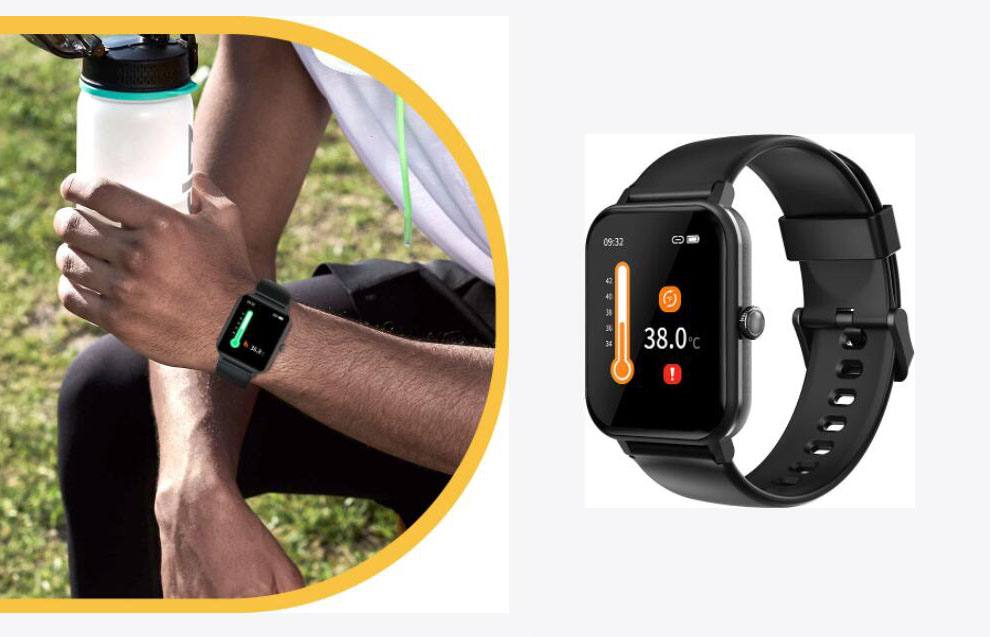Thermal Imaging Explore: How Does It Work On The Human Body
Welcome to Blackview blog. Blackview is a professional brand of rugged phones.

Thermal imaging is a non-invasive technology that uses infrared radiation to create images of the human body. Infrared radiation is a type of electromagnetic radiation that is invisible to the naked eye. It is emitted by all objects, including the human body. The amount of infrared radiation emitted by an object is directly related to its temperature. Hotter objects emit more infrared radiation than cooler objects.
Thermal imaging cameras work by detecting infrared radiation and converting it into electrical signals. These signals are then amplified and processed by a computer/smartphone, which creates an image of the object being scanned. The image is displayed on a monitor and shows the distribution of heat on the surface of the object.
Thermal imaging can be used to detect a variety of conditions in the human body, some examples are:
- Inflammation: Inflammation is a condition that causes tissue to become swollen and tender. It is often accompanied by an increase in blood flow to the affected area. This increased blood flow causes the area to become warmer than the surrounding tissue. Thermal imaging can be used to detect areas of inflammation by looking for areas of increased heat.
- Breast cancer: Breast cancer can cause changes in the temperature of the breast tissue. Thermal imaging can be used to detect these changes and identify areas of concern.
- Arthritis: Arthritis is a condition that causes inflammation and pain in the joints. It can also cause changes in the temperature of the skin over the affected joints. Thermal imaging can be used to detect these changes and identify areas of concern.
- Heart disease: Heart disease can cause changes in the body's temperature distribution. For example, people with heart disease often have cold hands and feet. Thermal imaging can be used to detect these changes, which can help doctors to diagnose heart disease early on.
- Stroke: Thermal imaging can be used to detect stroke by looking for changes in the temperature of the brain tissue.
- Peripheral artery disease (PAD): PAD is a condition that causes narrowing of the arteries in the legs. This narrowing can restrict blood flow to the legs, which can cause pain, numbness, and coldness in the feet. Thermal imaging can be used to detect areas of decreased blood flow in the legs.
- Judge people’s emotional changes: With a thermal camera smartphone, it can be used to judge people’s emotional changes to a certain extent. Different emotions are associated with different patterns of heat emission. Though the thermal camera is not a perfect tool for judging emotions, it can be used as one of the references.
Thermal imaging is a valuable tool that can be used to detect a variety of conditions in the human body. It is a non-invasive and painless procedure that can be used to identify areas of concern that may require further medical attention.
Advantages of Thermal Imaging
There are a number of advantages to using thermal imaging for medical purposes. These include:
- Non-invasive: Thermal imaging is a non-invasive procedure, which means that it does not require any needles or incisions. This makes it a good option for people who are uncomfortable with traditional medical procedures.
- Painless: Thermal imaging is a painless procedure. There is no discomfort associated with the procedure, and there is no risk of infection.
- Accurate: Thermal imaging is a very accurate way to detect changes in temperature. This makes it a valuable tool for detecting a variety of conditions, including inflammation, cancer, and arthritis.
- Early detection: Thermal imaging can be used to detect conditions early on, when they are easier to treat. This can help to improve the chances of a successful outcome.
Disadvantages of Thermal Imaging
There are a few disadvantages to using thermal imaging for medical purposes. These include:
- Limited resolution: Thermal imaging cameras have limited resolution, which means that they cannot see small details. This can make it difficult to detect small tumors or other abnormalities.
- Influenced by environmental factors: Thermal imaging can be influenced by environmental factors, such as temperature and humidity. This can make it difficult to interpret the images.
- Cost: Thermal imaging cameras are expensive. This can make them inaccessible to some people.
Conclusion
Thermal imaging is a valuable tool that can be used to detect a variety of conditions in the human body. It is a non-invasive, painless, and accurate procedure that can be used to detect conditions early on, when they are easier to treat. However, there are some limitations to thermal imaging, such as limited resolution and the influence of environmental factors.
Read also,
- Can a thermal camera see through clothes
- Can a thermal camera see through walls
- Infrared camera vs thermal camera
- Can a thermal camera detect hidden cameras
- Can a thermal camera find water leaks
- What does thermal imaging detect
- Thermal imaging used in agriculture
- Can thermal see through glass
- Can police use thermal imaging without warrant
- How to trick a thermal imaging camera
- Thermal cameras for ghost hunting
- Why do firefighters use thermal imaging cameras







